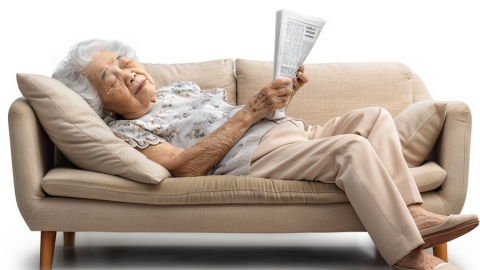What does it mean when elderly people confined to bed have blood oxygen levels between 80% and 90%, and what should be done?
Blood oxygen refers to blood oxygen saturation. For bedridden elderly individuals, a blood oxygen saturation level between 80% and 90% indicates a relatively low state, which may be related to factors such as airway obstruction due to sputum, anemia, respiratory muscle weakness, emphysema, or heart failure. Management may involve general treatments, medication, and other approaches. It is recommended to seek timely medical evaluation at a hospital and undergo symptomatic treatment under a physician's guidance. Detailed analysis is as follows:

1. Airway obstruction due to sputum: Bedridden elderly individuals may experience weakened ability to cough and expel phlegm, leading to sputum accumulation in the airways, causing blockage and impairing gas exchange, which results in decreased blood oxygen saturation. It is recommended to assist the elderly in turning over regularly, perform back tapping, encourage coughing and expectoration, and use a suction device when necessary to maintain airway patency.
2. Anemia: Elderly individuals may suffer from anemia due to malnutrition or chronic diseases, resulting in reduced hemoglobin levels and decreased oxygen-carrying capacity. Even with normal pulmonary gas exchange, blood oxygen saturation may remain low. Iron supplements, such as compound ammonium glycyrrhizinate syrup, ferrous fumarate tablets, or ferrous sulfate sustained-release tablets, may be administered under a physician's recommendation.
3. Respiratory muscle weakness: Prolonged bed rest may lead to respiratory muscle atrophy or weakness, impairing respiratory function and causing decreased blood oxygen saturation. Family members should encourage the elderly to perform feasible respiratory exercises, such as deep breathing and coughing, to strengthen respiratory muscles.
4. Emphysema: Emphysema is a lung condition. Elderly bedridden individuals often have weaker physical conditions, making the lungs more susceptible to irritation and leading to emphysema, primarily characterized by reduced lung elasticity, enlarged and ruptured alveoli, and impaired pulmonary ventilation function, resulting in blood oxygen saturation levels between 80% and 90%. Prompt adherence to medical advice for medication such as salmeterol xinafoate aerosol, formoterol fumarate inhalation solution, or aminophylline tablets is recommended to alleviate symptoms.
5. Heart failure: Causes of heart failure include myocardial damage, excessive cardiac load, and insufficient ventricular preload. Bedridden elderly individuals may have pre-existing heart conditions that weaken the heart's pumping function, leading to tissue and organ hypoxia and blood oxygen saturation levels between 80% and 90%. When necessary, medications such as benazepril hydrochloride tablets, furosemide injection, or metoprolol tartrate tablets may be used under medical guidance.
During recovery, it is important to ventilate the room regularly every day, at least 2-3 times for about 30 minutes each time, to ensure fresh indoor air and increased oxygen levels.





